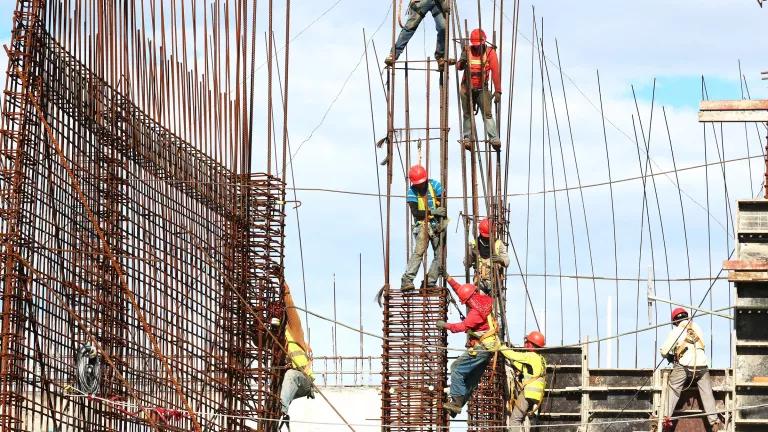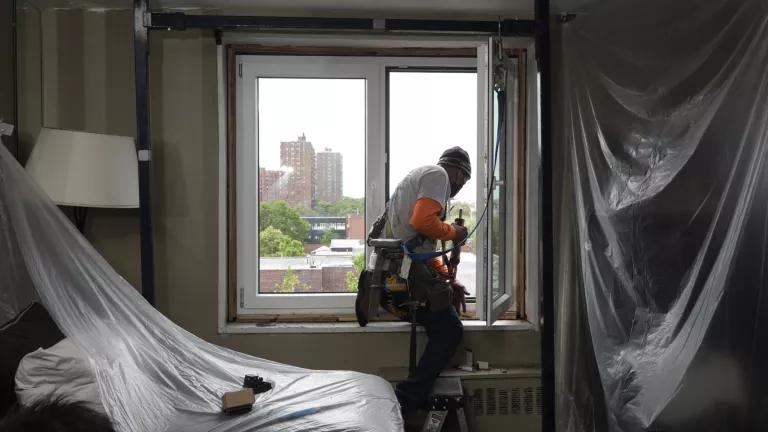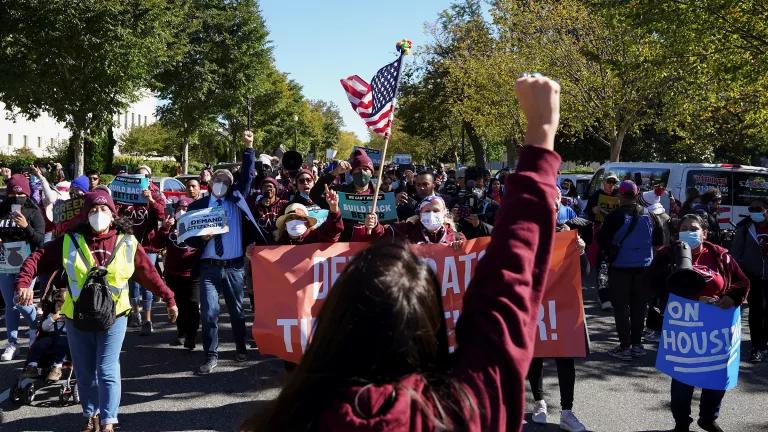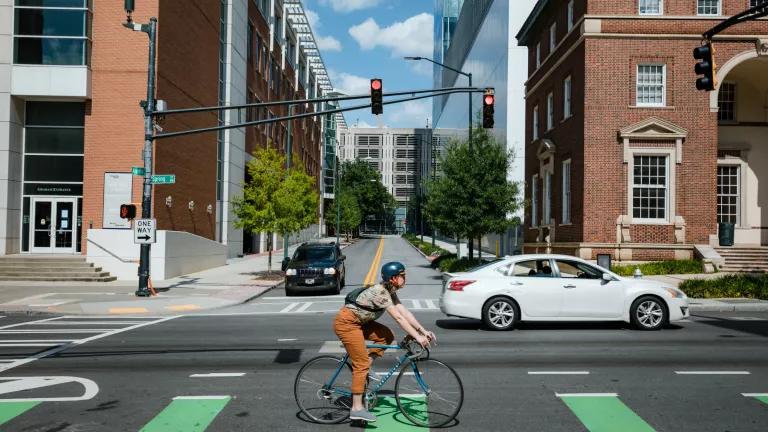Delivering the Promise of the Infrastructure Law
A year ago President Biden signed the blockbuster 1.2 trillion dollar infrastructure law, and it’s clear that this time we have a chance to do it right. Too often in the past, spending on highways divided and destroyed communities of color, and new construction benefited wealthier suburban areas while ignoring the needs of poorer, city residents.

A year ago President Biden signed the blockbuster 1.2 trillion dollar infrastructure law, and it’s clear that this time we have a chance to do it right. Too often in the past, spending on highways divided and destroyed communities of color, and new construction benefited wealthier suburban areas while ignoring the needs of poorer, city residents.
That cannot happen again.
Any dollar spent on infrastructure should also work to ensure our climate is safe for our children and lifts up communities that have been harmed and left out. The promise is enormous—millions of jobs, clean drinking water, safer communities, and less climate pollution—but it can’t bel left to chance. NRDC is doing all it can to ensure that this time infrastructure investments work for all.
When President Biden signed the infrastructure law he noted that it was the largest investment in infrastructure in a generation. The investments can spur rapid growth in the clean energy economy and reduce emissions from the transportation sector, America’s largest source of climate pollution. They will create millions of new jobs fixing roads and expanding transit service, building a national network for charging electric vehicles, replacing old lead pipes and sewer lines, and extending broadband service to rural communities. Perhaps most importantly, they are a critical tool for meeting the Biden Administration’s commitment to spending at least 40 percent of federal funds in disadvantaged communities—Justice40. But, while passing very large federal funding bills is groundbreaking, progress isn’t always a given, and our work has only just begun.
Smart, equitable and climate-friendly implementation is critical in order to deliver on potential reductions in emissions and take advantage of this opportunity to build a more inclusive economy. That’s because the infrastructure law doesn’t explicitly require a shift from business-as-usual. Governors have enormous control over how 90% of the funds will be spent—they can choose the unhealthy path of expanding highways or they can invest in low carbon transportation options; they can target disadvantaged communities to deliver safe drinking water or continue to ignore the problem of aging lead pipes.
With community leaders, mayors, governors, and national advocates—NRDC is doing the hard work to shape the rules of the game and direct funding to community priorities. We are partnering with the Communities First Infrastructure Alliance to ensure community voices guide infrastructure decisions and PolicyLink to create a set of model policies for delivering equitable infrastructure investments.
To set the stage for the equitable transformation our country needs to meet this moment, NRDC’s experts are working on a number of fronts to shape the transportation and drinking water investments:
- Shaping rules that drive innovation in transportation infrastructure spending, such as the Department of Transportation’s greenhouse gas performance metrics.
- Supporting a public-private electric vehicle charging coalition to ensure that these new charging stations are built in all communities, not just wealthier ones.
- Making the case to state leaders that they should use the new transportation funding for active transportation options and charging stations, instead of just building new highways.
- Developing principles of lead service line removal that prioritize the communities most at risk.
- Standing by community groups fighting for safe water, including filing lawsuits to hold cities and states accountable, and providing analyses and new reporting to move this issue to a top concern for policy makers. (A new poll NRDC just released found that this is already a top concern for the public, with nine in 10 of those surveyed saying the Environmental Protection Agency should update its outdated and insufficient lead and copper rule).
Our work is far from over. In addition to continued work to ensure that infrastructure funds are spent wisely, we are working to implement the Inflation Reduction Act, the historic climate bill Congress passed this past summer. We’re completely committed to ensuring that state and local leaders have the understanding, tools, and encouragement to choose the bolder path toward a future where everyone benefits by investing in communities that deserve it most.




